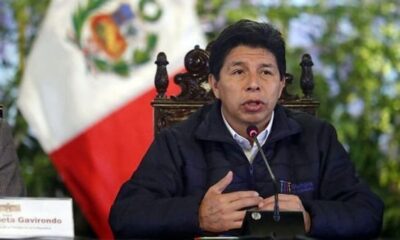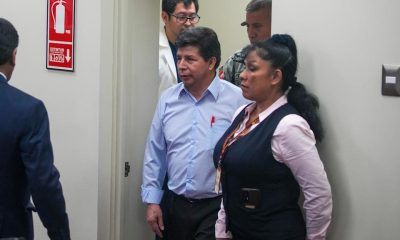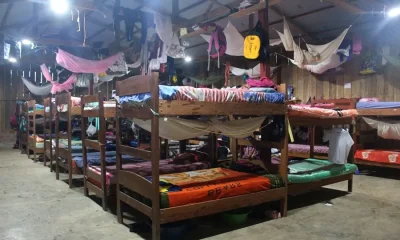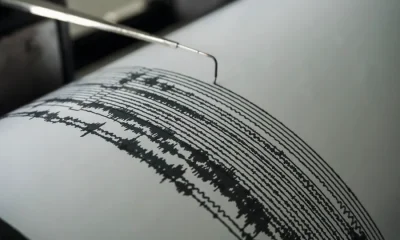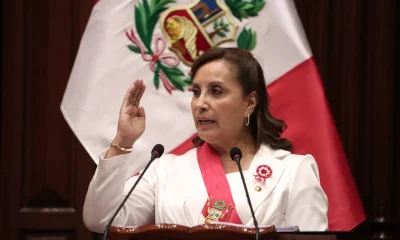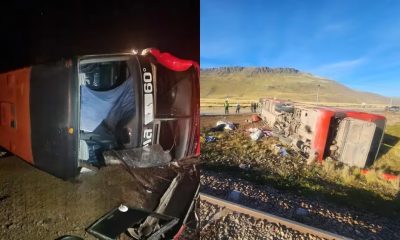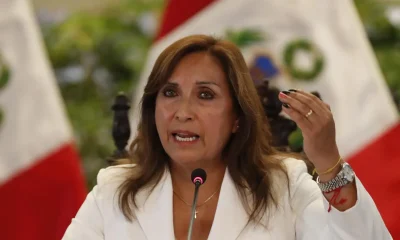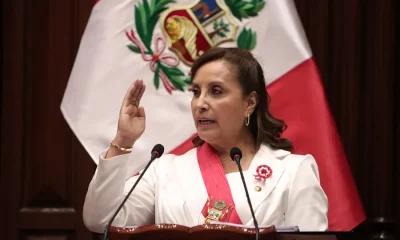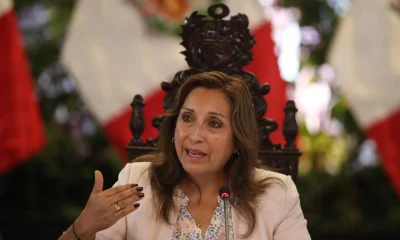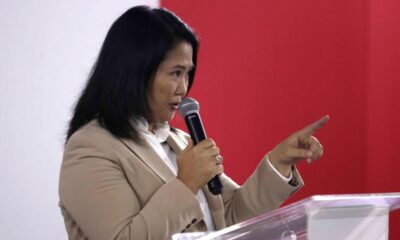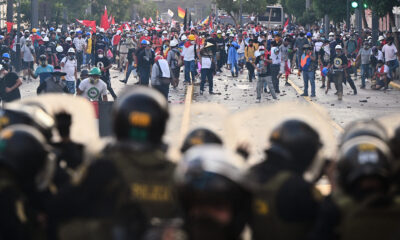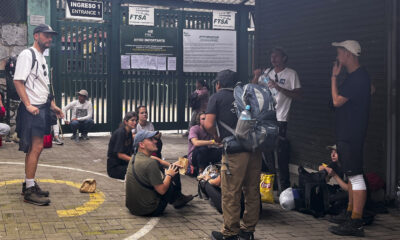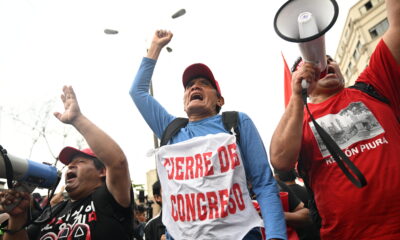International
Clashes in Lima as thousands rally against Peru government
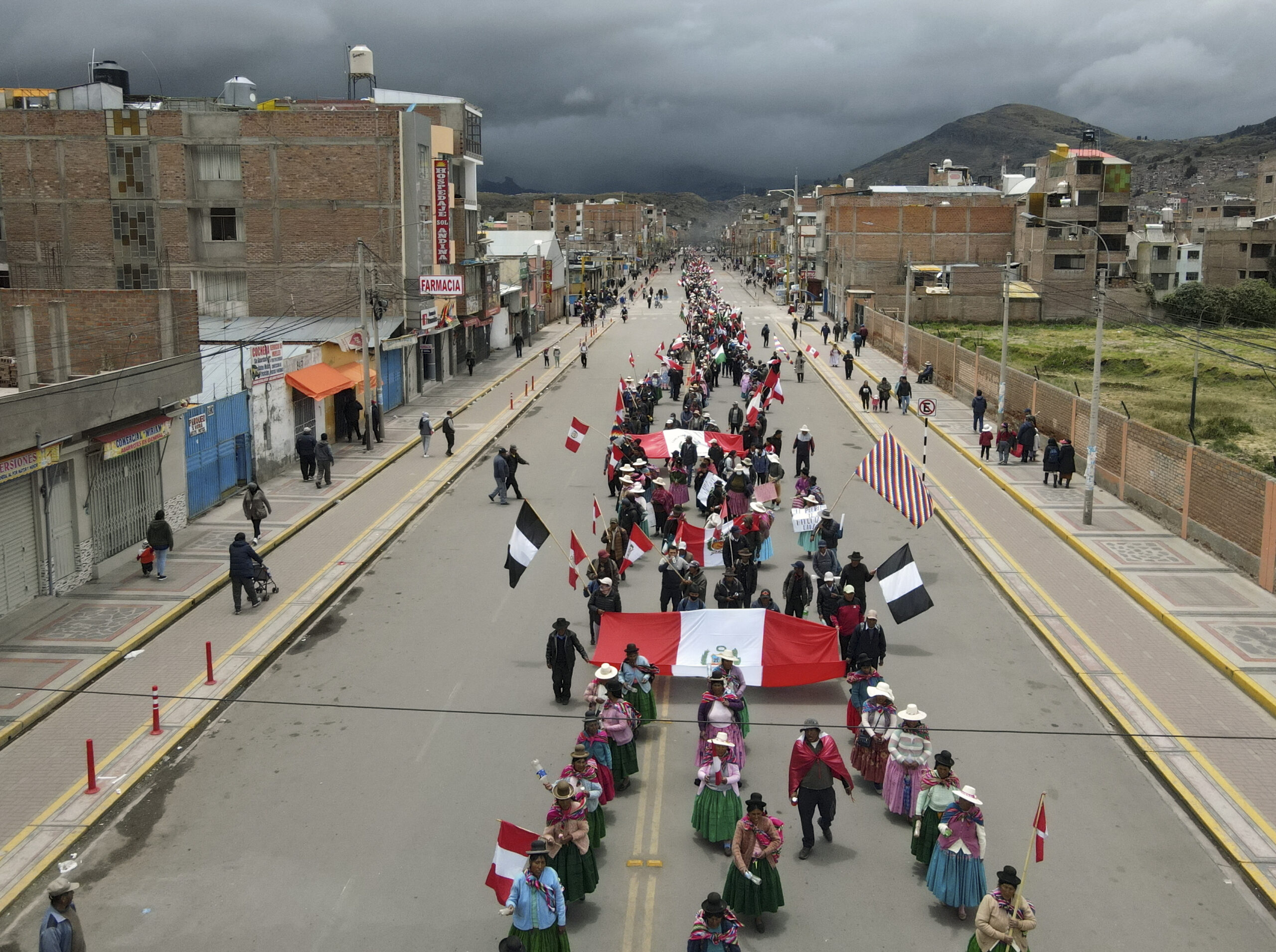
January 20 | By AFP | Carlos Mandujano / Luis Jaime Cisneros |
Thousands marched through Peru’s capital Thursday in a large anti-government rally punctuated by clashes with police, while the death toll from over a month of violent protests climbed in the country’s southern regions.
Some of the Lima protesters, who are demanding the resignation of President Dina Boluarte and fresh elections, threw stones and bottles at officers in the city center, AFP reporters saw.
The police were forced to temporarily retreat before they dug in behind riot shields and began deploying tear gas. At least two people were injured.
One building near the central Plaza San Martin caught fire, though it was not immediately clear how.
Peru has been rocked by protests since the ouster of Boluarte’s predecessor, Pedro Castillo, in early December — though violent clashes have largely been isolated thus far to the country’s south and east.
In the southern city of Arequipa, some 1,000 protesters tried early Thursday to storm the airport, but were also repelled by police firing tear gas, local television showed.
Peru’s human rights ombudsman later announced that one person had been killed in Arequipa, adding to two other deaths resulting from clashes on Wednesday and raising the nationwide death toll to 45.
The demonstrators in Lima, who are mostly from Andean regions, set off from several points around the capital with the aim of reaching the heavily-guarded presidential palace by the end of Thursday.
“Dina listen, the people disown you,” they chanted, while others called for the president to be assassinated.
“We are here, fighting for our just cause. We want them to close Congress,” villager Ayda Aroni, who came from Ayacucho, 330 kilometers (205 miles) southeast of Lima, told AFP.
“We are marginalized, they say we’re vandals, they call us terrorists, we’re demanding our rights.”
“I am in Lima to defend the country because there is too much corruption. Dina does not represent us. We’re going to stay for a week to continue the demonstrations,” said Demetrio Jimenez, who came from Puno, near the Bolivian border.
Demonstrators also tried to once again take over the airport in Cusco, a popular tourist destination, though it was closed; while there were similar protests in regions such as Puno, Huanuco and Tacna.
Boluarte called for dialogue late Thursday.
“I will not tire” of seeking peaceful ways to move the country forward, she said on state television — adding that the “acts of violence generated throughout December and now in January will not go unpunished.”
Ready to ‘give my life’
The protesters in Lima are trying to keep up pressure on the government, defying a state of emergency declared to maintain order.
On Thursday, the emergency was extended to three more regions, bringing almost one-third of the country under the order.
“We have 11,800 police officers in the streets to control unrest, we have more than 120 vans and 49 military vehicles, and also the armed forces are participating,” said police chief Victor Zanabria Thursday.
Protesters are undeterred, though.
“In Lima, the struggle has more weight. When they repress us in our regions, no one mentions it,” said Abdon Felix Flores, a 30-year-old villager from Andahuaylas in the Cusco region.
Flores said he was ready “to give my life” to ensure change.
“We have come in an organized way to take over Lima, to paralyze Lima, to be heard,” said Jesus Gomez, an agricultural engineer from Chumbivilcas, also in the Cusco region.
One of Peru’s biggest labor unions, the General Confederation of Workers, called a strike for Thursday, though there were no visible signs of such a strike in Lima.
“The Peruvian people’s struggle will not end tomorrow,” Geronimo Lopez, the general secretary of the General Confederation of Workers, said in a press conference late Wednesday night.
“It will continue as long as Mrs Dina Boluarte doesn’t listen to the people,” added Lopez.
‘Traitor’
Peru’s sports institute suspended the start of the national football league this weekend due to the unrest, while almost 100 roadblocks remain across Peru.
Castillo was removed from office and arrested on December 7 after attempting to dissolve the country’s legislature and rule by decree, amid multiple corruption investigations.
The crisis also reflects the huge gap between the capital and the rural provinces, which supported Castillo and saw his election as revenge for Lima’s contempt.
Boluarte, who was Castillo’s vice president, succeeded him. But despite Boluarte belonging to the same left-wing party, Castillo supporters have rejected her, even accusing her of being a “traitor.”
International
Paraguay summons Brazilian ambassador over Itaipú espionage scandal
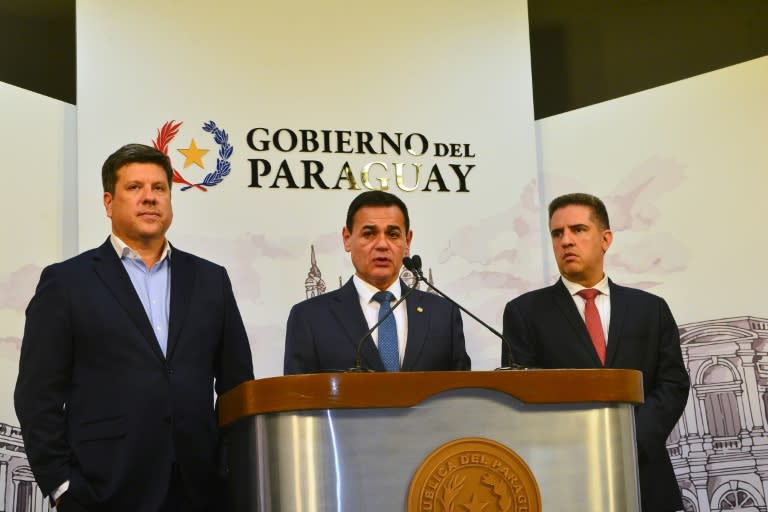
Paraguay summoned the Brazilian ambassador in Asunción on Tuesday to demand “explanations” and called its own representative in Brasília for consultations following Brazil’s acknowledgment of an espionage operation. The Brazilian government, led by President Luiz Inácio Lula da Silva, attributed the operation to the previous administration.
The surveillance effort aimed to uncover Paraguay’s position in now-suspended negotiations with Brazil regarding the pricing of electricity from the binational Itaipú hydroelectric plant, according to reports in the Brazilian press.
The Brazilian government “categorically denied any involvement in the intelligence operation,” stating in a Foreign Ministry communiqué on Monday that the espionage was carried out under former President Jair Bolsonaro’s administration (2019-2023).
“The operation was authorized by the previous government in June 2022 and was annulled by the interim director of the (state intelligence agency) ABIN on March 27, 2023, as soon as the current administration became aware of it,” Brazil’s government asserted.
Paraguay’s Foreign Minister Rubén Ramírez announced that Brazilian Ambassador José Antonio Marcondes de Carvalho was summoned “to provide detailed explanations” regarding the operation. Additionally, Paraguay recalled its diplomatic representative in Brasília “to report on aspects related to the intelligence activity conducted by Brazil regarding Paraguay’s government affairs.”
International
Elon Musk to step down as government advisor, per Trump insiders
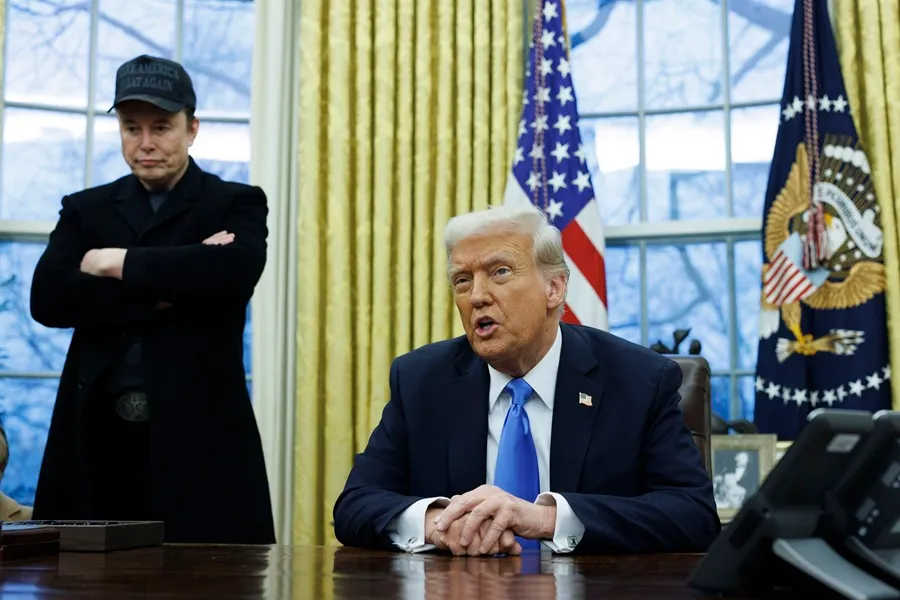
President Donald Trump has informed his inner circle that Elon Musk will be stepping down from his role as a government advisor, according to a report by Politico today.
Citing three individuals close to Trump, Politico states that the president is pleased with Musk’s leadership at the Department of Government Efficiency (DOGE), where he has implemented significant budget cuts. However, both have agreed that it is time for Musk to return to his businesses and support Trump from a different position outside the government.
A senior administration official told Politico that Musk will likely maintain an informal advisory role and continue to be an occasional visitor to the White House. Another source warned that anyone thinking Musk will completely disappear from Trump’s circle is “deluding themselves.”
According to the sources, this transition is expected to coincide with the end of Musk’s tenure as a “special government employee,” a temporary status that exempts him from certain ethics and conflict-of-interest regulations. This 130-day period is set to expire in late May or early June.
International
Milei vows to make Argentina so strong that Falkland Islanders “choose” to join
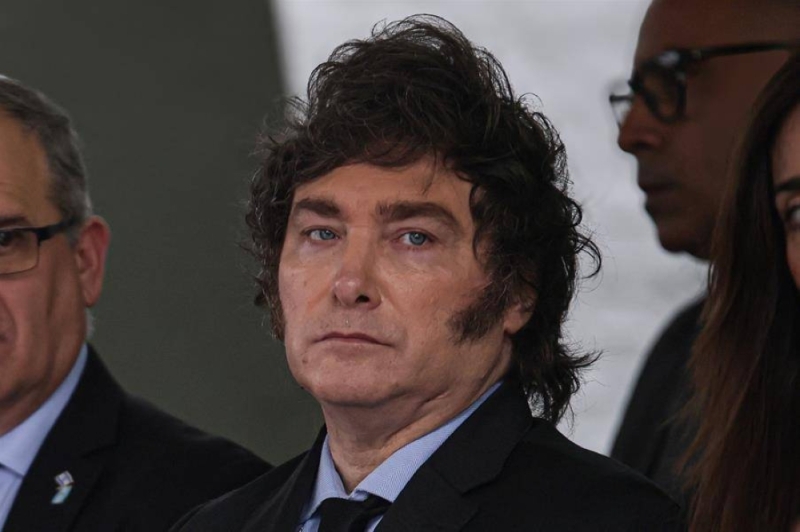
Argentine President Javier Milei reaffirmed his country’s claim over the Falkland Islands (known as the Islas Malvinas in Argentina) and praised the role of the nation’s armed forces during a ceremony marking the “Veterans and Fallen Soldiers of the Malvinas War Day,” commemorating 43 years since the 1982 conflict with the United Kingdom.
Argentina continues to assert sovereignty over the islands, arguing that Britain unlawfully seized them in 1833.
“If sovereignty over the Malvinas is the issue, we have always made it clear that the most important vote is the one cast with one’s feet. We hope that one day, the Malvinas residents will choose to vote with their feet and join us,” Milei stated.
“That is why we aim to become a global power—so much so that they would prefer to be Argentine, making deterrence or persuasion unnecessary. This is why we have embarked on a path of liberation, working to make Argentina the freest country in the world and once again the nation with the highest GDP per capita on the planet,” he added.
-
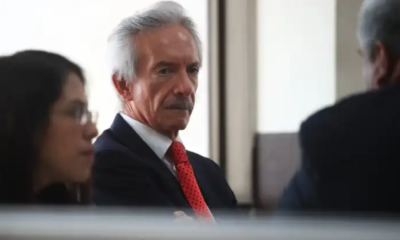
 International4 days ago
International4 days agoSon of journalist José Rubén Zamora condemns father’s return to prison as “illegal”
-
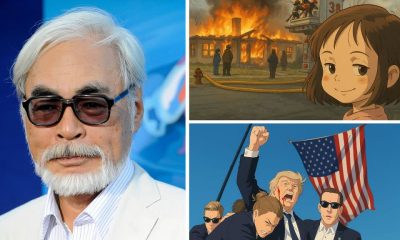
 International4 days ago
International4 days agoMiyazaki’s style goes viral with AI but at what cost?
-
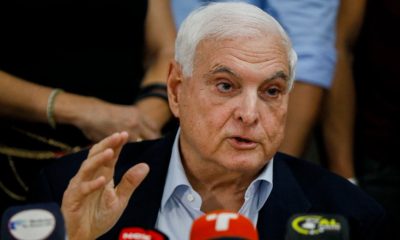
 Central America3 days ago
Central America3 days agoPanama police clarifies that Interpol alert for Martinelli is still pending
-
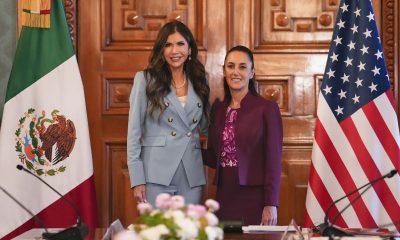
 Central America2 days ago
Central America2 days agoU.S. Homeland Security Secretary urges Mexico to strengthen Guatemala border
-
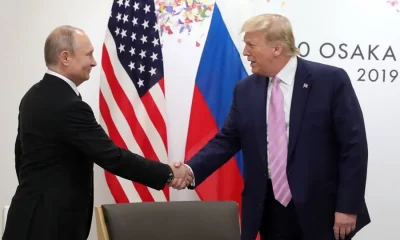
 International2 days ago
International2 days agoTrump urges Putin to reach peace deal
-
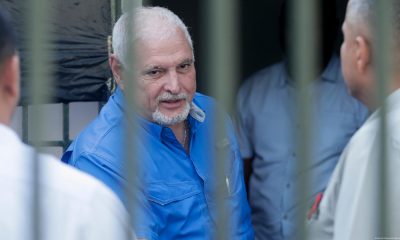
 Central America2 days ago
Central America2 days agoPanama grants Martinelli 72-hour extension to travel to Nicaragua
-
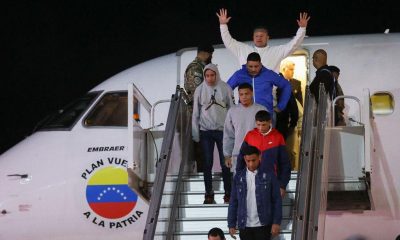
 International3 days ago
International3 days agoDeportation flight lands in Venezuela; government denies criminal gang links
-
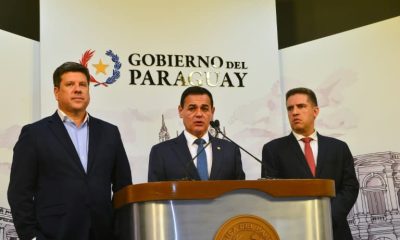
 International16 hours ago
International16 hours agoParaguay summons Brazilian ambassador over Itaipú espionage scandal
-

 Sports16 hours ago
Sports16 hours agoFilipe Luis debuts as coach in Copa Libertadores with Flamengo
-
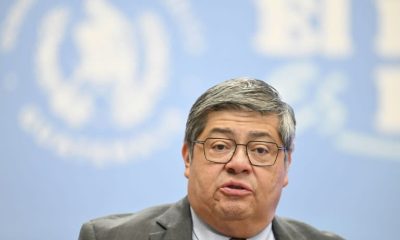
 Central America13 hours ago
Central America13 hours agoGuatemalan police officer killed in mob riots over baby kidnapping
-
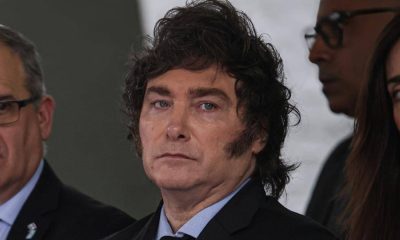
 International16 hours ago
International16 hours agoMilei vows to make Argentina so strong that Falkland Islanders “choose” to join
-
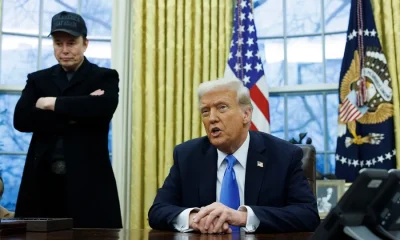
 International16 hours ago
International16 hours agoElon Musk to step down as government advisor, per Trump insiders
-
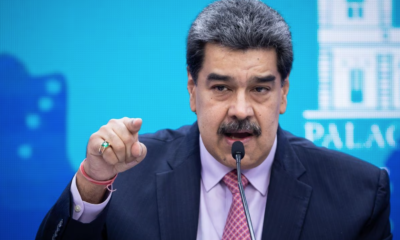
 Sports16 hours ago
Sports16 hours agoVenezuela investigates 18 baseball players seeking asylum in Spain
-
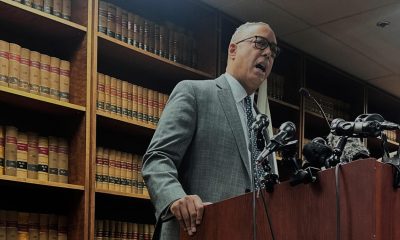
 International16 hours ago
International16 hours agoICE agent’s arrest of suspect sparks controversy in Boston
-
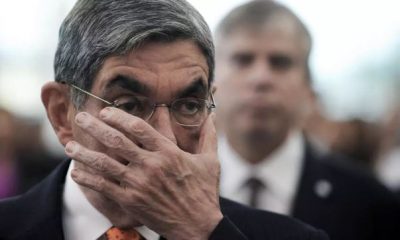
 International16 hours ago
International16 hours agoÓscar Arias: Trump’s trade policies are a step backward














